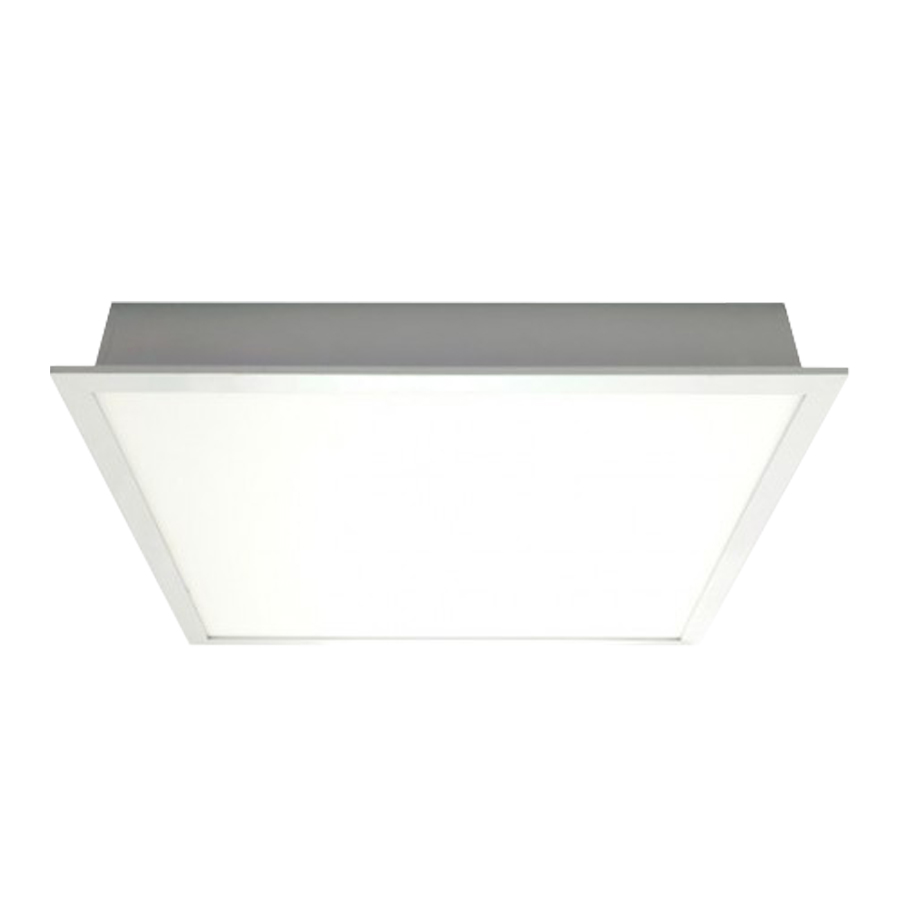If your workspace is still lit using 4 x 18W recessed fluorescent units, you really ought to change them. There is a huge range of more efficient LED ceiling panels available. We have tested 10 panels from the cheapest and most cheerful to quality engineered units with sophisticated optics. We could easily have tested 10 more. We have tested both the thin flat panel (edge-lit) types and the deeper troffer types, which are backlit.
Unfortunately, there seems to be a race to the bottom in price. This, coupled with a lack of basic photometric data from some suppliers, has led to quite a few poor lighting installations. I speak to a lot of people who complain about glare, uneven light distribution, dark ceilings and areas in the office that don’t receive much light because the luminaires are arranged inefficiently.
Bright, white and gloomy
Obviously, a flush, recessed luminaire cannot project any light on to the ceiling – the ceiling won’t receive any direct light. So the workspace can look dark and gloomy even if the ceiling is white.
Incidentally, unless the floor and worktops are quite pale, your installation may not meet the minimum requirements of BS EN 12464-1. It is also unlikely to meet the British Council of Offices guidance, the SLL’s LG7 or the Code for Lighting. And frankly, dark ceilings are best avoided whether or not they comply.
Related to this, glare from the panels, seen against a dark ceiling, is exacerbated by the high lumen output (and hence, luminance) of some of these units. Many LED panels emit 50 per cent more light than the 4 x 18W fluorescent units they replace. More light doesn’t necessarily mean better lighting. One solution may be to dim the panels to save more energy. An alternative is to increase the light on the ceiling using extra uplighters.
To reduce the risk of glare, you need to ask the supplier for the maximum luminance (cd/m2) of the panel. We often assume that the workspace will have positive polarity screens. Common examples are word processing or spreadsheets where black lettering is seen against a white background. Here, the limit is 3,000cd/m2. However, a lot of CAD and photo-manipulation software displays lines or text against a black or dark grey background and the maximum panel luminance for these areas is 1,500cd/m2. Again, there are various solutions including dimming or using luminaires with good optical control. The guidance documents mentioned above give the luminance limits for various scenarios.
The manufacturers of all the luminaires we tested said the panels produce installations with a unified glare rating of less than 19. If you have any doubts, ask your supplier for the data to support their claim.
Finally, we seem wedded (in the UK at least) to fixing luminaires at 2.4 or 3m centres. How do you know that the panel you choose will not create dark areas across the workspace? It is difficult to tell from the sales and technical literature because, in most cases, the data isn’t provided. Technical information costs money to produce and that’s not the name of the game for many panel suppliers.
Proprietary software
The solution is to calculate the values across the whole space using proprietary software. But who is going to take time to do that if the only topic under discussion is price?
In our tests, we didn’t see much of a correlation between build quality, performance and price. Choose the panel that meets your lighting needs and those of your staff, and then look at the price.
The price ranges given are based on approximate end user prices for a quantity of 50 non-dimmable versions without emergency or PIR sensor options. The ranges are: £ <£80, ££ £80-160, £££ £160-240, ££££ >£240.
This market is viciously competitive but remember that energy cost savings from dimming the panel or a more efficient optic/light engine may well override any differences in the initial purchase price.

